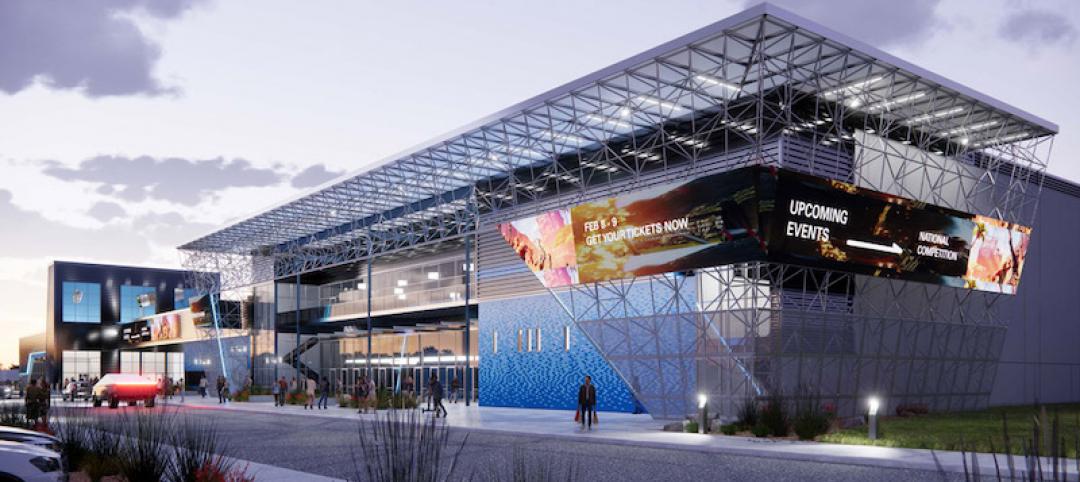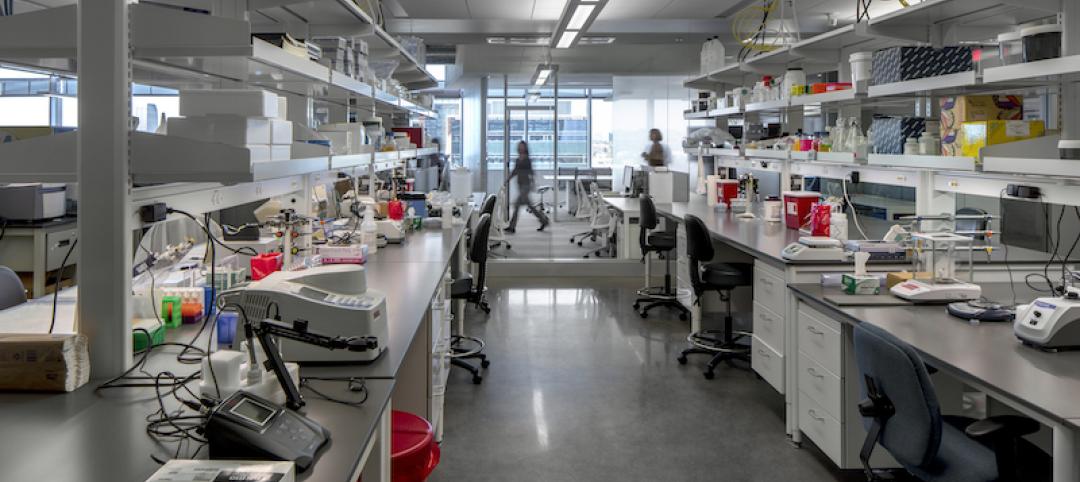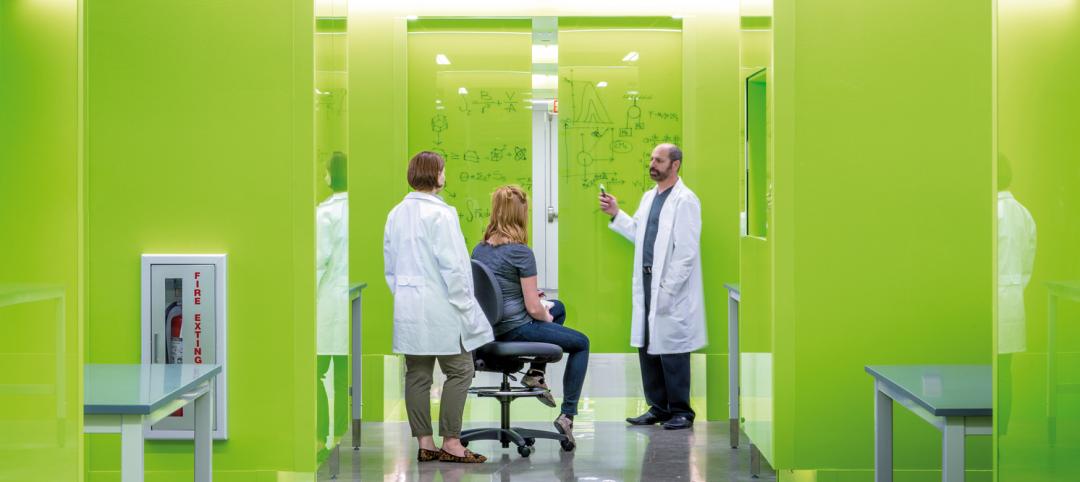Developers Taconic Investment Partners and Silverstein Properties are spending $20 million to renovate the 326,861-sf Movie Lab building in Midtown Manhattan for life science research usage.
The New York Post reports that the Stem Cell Foundation has leased 42,100 sf in this building since 2015. Another 150,000 sf on the top floors of this 10-story building are being upgraded to attract more life science tenants. The building reportedly is changing its name to the Hudson Research Center.
Transwestern, which is marketing this lab space for the developers, has released a special report that portrays New York City as an emerging life sciences hub, where space is tight and development opportunities are multiplying.
New York is already a significant player in this field, by virtue of being home to 11 major academic medical centers, including Weill Cornell Medical College and Albert Einstein College of Medicine. The city also has three of the country’s top 15 hospitals and five of the top 50 medical schools, according to U.S. News and World Report’s latest report card.

New York City is already a leader in life sciences employment and, more recently, available funding. Image: Transwestern
The city also one of the country’s highest concentrations of life-science employees, accounting for one-fifth of the total employment in this sector within the top 10 life science markets.
The problem is shortage of lab space. Transwestern estimates that 100% of the city’s 1.7 million sf of existing life science and research space is occupied. And until recently, New York’s zoning restrictions made it particularly tough for life science companies to build lab space within manufacturing districts—M Zones—that restrict chemical compounding and packaging, the creation of pharmaceutical products and medical appliances, laboratories, research, experimental and testing facilities.
But over the past year or so, market and regulatory changes have made development more conducive for lab science expansion.
Indeed, recent lease transactions have included 49,143 sf at 10 Hudson Yards for Intercept Pharmaceuticals, 30,000 sf at 101 Avenue of the Americas for JLABS (division of J&J Innovations), 19,645 sf at 100 Wall Street for Integra Partners, 11,865 sf at 600 Third Avenue for Turing Pharmaceuticals, and 11,537 sf at 25 West 45th Street for Crossover Health.
More investment capital and funding are flowing into the city for this sector. Out of the $31.3 billion in National Institutes of Health funding awarded nationally in 2016, the New York metro area received $2.7 billion in NIH grants. New York City alone was awarded $1.4 billion, ranking it the second-highest funded city in the country.

More dollars from the National Institutes of Health are flowing into New York State and, particularly, New York City. Image: NIH/Transwestern
Last December, New York Governor Andrew Cuomo unveiled a state-funded life science initiative that includes $250 million in tax incentives for new and existing life science companies, $200 million in state capital grants to further support investment in wet-lab and innovation space, $100 million in investment capital for early stage life science initiatives, and a state match of at least $100 million for operating support from private sector partnerships.
New York City Mayor Bill DiBlasio also has launched a program called LifeSci NYC, which will include a $100 million investment to create a new applied life science campus, $50 million to expand a network of life science R&D facilities, $10 million to expand the network of incubators, $20 million a year in matching funds to support early-stage businesses, and $300 million in tax incentives for commercial lab space.
On the zoning front, in December the Departments of Buildings (DOB) and City Planning (DCP), and the Economic Development Corporation (EDC) issued a clarification memo updating their interpretation of the zoning in the several commercial districts.
The city agencies and the EDC, says Transwestern, “broadened their understanding of the current use group 9A zoning to also include the “synthesis and manipulation of chemical substances, biological matter, and animal models … [that] are integral activities in commercial medical laboratories devoted to research and testing.”
Already, new research and lab spaces are popping up. The Cornell Tech campus on New York City’s Roosevelt Island just opened its first phase. And the 1.17-million-sf Building 77 at the Brooklyn Navy Yard is undergoing a $185 million renovation that could attract lab tenants.
Related Stories
Giants 400 | Dec 3, 2020
2020 Laboratory Facilities Sector Giants: Top architecture, engineering, and construction firms in the U.S. laboratory facilities sector
Affiliated Engineers, HDR, and Skanska top BD+C's rankings of the nation's largest laboratory facilities sector architecture, engineering, and construction firms, as reported in the 2020 Giants 400 Report.
Laboratories | Nov 16, 2020
Washington State University’s new Plant Sciences Building opens
LMN Architects designed the project.
AEC Tech Innovation | Sep 18, 2020
New Innovation Center should heighten Port San Antonio’s tech profile
The facility will include a 2,500-seat arena and serve as new home for the city’s S&T museum.
Laboratories | Aug 25, 2020
Video: What's driving the boom in life sciences real estate?
JLL's Audrey Symes discusses the drivers of growth across the nation's life sciences cluster hubs.
Laboratories | Jul 24, 2020
Customized labs give universities a recruiting edge
CO Architects is among a handful of firms that caters to this trend.
Laboratories | Jun 24, 2020
CDC set to build the most advanced high containment laboratory in the country
Flad Architects, Page Southerland Page, and WSP will plan, program, and design the HCCL.
University Buildings | Jun 3, 2020
Renovation can turn older university buildings into high-performing labs
David Miller of BSALifeStructures offers technical advice on renovation of college and university laboratories and scientific research facilities.
Giants 400 | Aug 13, 2019
2019 Science + Technology Giants Report: Operational flexibility is a must for S+T buildings
The science and technology (S+T) sector is arguably the industry’s most complex because it caters to a diverse clientele with specific priorities and imperatives, according to Building Design+Construction's 2019 Giants 300 Report.
Laboratories | May 21, 2019
Georgia Tech Research Institute adds 350,000 sf of specialized tech facilities
McCarthy Building Companies with Flad Architects acted as the design-build team.
Laboratories | Apr 23, 2019
Translational health science environments: 6 strategies for open innovation and knowledge transfer
Simply putting researchers and clinicians in the same building with hopes that serendipitous collaborations will ensue will often not yield the outcomes organizations seek.
















